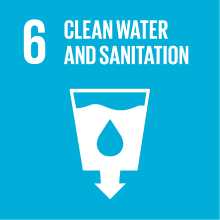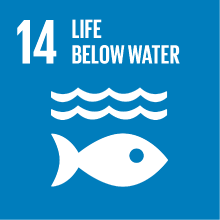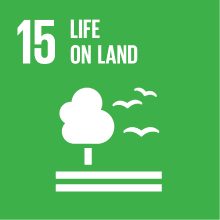APPLIED BIOLOGY TO CULTURAL HERITAGE - MOD. 1
- Academic year
- 2021/2022 Syllabus of previous years
- Official course title
- BIOLOGIA APPLICATA AI BENI CULTURALI - MOD. 1
- Course code
- CT0602 (AF:340960 AR:187301)
- Teaching language
- Italian
- Modality
- On campus classes
- ECTS credits
- 6
- Degree level
- Bachelor's Degree Programme
- Academic Discipline
- BIO/19
- Period
- 1st Semester
- Course year
- 2
- Moodle
- Go to Moodle page
Contribution of the course to the overall degree programme goals
Principal educational objectives of this teaching are: 1) to develop the ability to identify and discern the different (micro)organisms capable of generating biodeterioration; 2) to stimulate a systemic approach in the determination and resolution of degradation phenomena originating from biological attack; 3) to encourage for a transversal and multidisciplinary approach in framing possible and useful intervention methodologies; 4) to provide scientific basis for an appropriate experimental approach, while developing manual skills and accuracy, both with classical and advanced technologies; 5) to know how to process and evaluate the experimental data collected, in order to formulate the most appropriate line of intervention and management, considering the historical-artistic peculiarity and environmental location of artifacts or products; 6) to instil a precise and proper use of scientific language.
Expected learning outcomes
1.1. To know the morphological features characterizing the different biodeteriogens for their recognition.
1.2. To know the elements characterizing the physiology and the behaviour expressed by the different biodeteriogens in a particular site of attack, depending on its chemical-physical characteristics, in a specific environmental context.
1.3. Understanding the best intervention strategy based on the biochemical-functional characteristics expressed site-specifically by the biodeteriogen.
2. Ability to apply knowledge and understanding
2.1. Knowing how to recognize (micro)organisms and their interactions, as the cause of biodeterioration process.
2.2. Knowing how to frame the abiotic elements and environmental factors that influence the establishment of a biodeterioration process.
2.3. Being able to propose an intervention strategy, taking into account the chemical-physical properties of the matrices involved, to better manage a biodeterioration process.
3. Ability to judge
3.1. Knowing how to interpret, critically evaluate and discuss the results of experimental analysis, to identify and characterize biodeterioration processes, in particular focusing the dependence on the type of rooting matrix.
3.2. Being able to discern the best intervention strategy, not only as the most suitable methodologies applicable, but also in terms of costs, timing, toxicological impact on operators, environmental sustainability.
3.3. To develop the ability to frame the various chemical-physical-biological-environmental information collected for the most real definition of the (micro) environment and the most suitable conservation and conservation intervention.
4. Communication skills
4.1. Being able to communicate the knowledge learned and the results in a coherent and rigorous manner, using an appropriate scientific language.
4.2. Being able to interact with the teacher and with the classmates in a respectful and constructive way, especially during the experimental exercises in the laboratory and in the field.
5. Learning skills
5.1. Being able to take notes, showing autonomy in the identification of the salient aspects of the concepts expressed in class and of the focal points of laboratory experiments.
5.2. Being able to search and use reference texts and bibliography.
5.3. Being able to explain the theoretical topics in practical laboratory applications.
Pre-requirements
Contents
PROCARIOTIC AND EUCARIOTIC CELL
Features and differences. Plasma membrane: biochemical structure, functions; differences. Genetic heritage: DNA, genes and genomes; gene reproduction and recombination. Mitosis and meiosis. Replication. Mutations.
rDNA TECHNOLOGY
Outline of applications used in the preservation of BBCC (FISH, restriction enzymes, antibody production, expression vectors, cloning, cDNA and microarray, genomic library).
BIODETERIOGENS
a) BACTERIA
Bacterial cell membrane. Periplasmic space, external membrane, capsule. Bacterial wall: chemical structure, morphology, functions; differences between Gram (+) and (-) bacteria: Gram staining. Archeabacteria wall. Bacterial cytoplasm and cell inclusions. Bacterial ribosomes. Bacterial DNA. Scourges and fimbriae. Bacterial spores. Archeabacteria: evolutionary collocation; structural and functional characteristics; extreme ecological niches. Cyanobacteria: morphological-structural characteristics; ecological niches.
b) FUNGI
Molds and Yeasts: distinctive characters. Fungal wall: chemical composition, structure, functions. Iphae: types, structure, functions. Cell membrane: chemical composition, structure, functions. Cellular endomembrane system. Core and nucleoli. DNA and RNA in Mushrooms: chromosomal and genomic peculiarities. Mitochondria. Citosol and cytoskeleton. Fungal vegetative structures. Fungal metabolism: symbionts; saprophytes; parasites. Life cycle of a Fungi: gamic phases and reproductive characteristics in the different phyla.
c) LICHENS
Morphological-structural features. Symbiosis concept: functional and biochemical interactions between mycobionts and photobionts. Rooting capacity on different substrates; ecological succession. Reproduction.
d) BRYOPHITE
Phylogeny of Bryophytes. Morphological-structural characteristics in Musks, Liverworts and Anthocerotephytes. Life cycle and forms of reproduction. Ecology and distribution.
e) ANIMALS
Mites, Insects, Rodents and Birds as biodeteriogenic organisms. Examples of adaptation and attack on specific matrices in the field of Cultural Heritage.
PART II
BIODETERORATION
Relationships between environmental conditions, type of substrate, nature of the colonizers.
a) ENVIRONMENTAL FACTORS
Environmental conditions for active cell growth or quiescence: tolerance limits; inhibition/increase in the biodeteriogen’s biochemistry processes. Temperature: Arrhenius curve, optimal temperature range. Oxygen: aerobiosis and anaerobiosis. Light: phototropism and photoperiodism, heliophilia and photosynthesis; quality, quantity, duration; high energy radiation. Water availability: water activity, RH; leaching. Air currents. Osmotic pressure. pH: optimum of activity. Micro and macro site-specific environmental.
b) SUBSTRATE CHARACTERISTICS
Deterioration vs biodeterioration. Matrix peculiarities favouring engraftment: morphology, chemical-physical characteristics, bioreceptivity. Conservation status: exposure time to environmental factors, products applied in a preventive and conservative phases. Effect and types of pollutants (biodegradable, (non)conservative, particulates, bioaerosol).
c) BIODETERIOGEN BIODIVERSITY
Cellular activity and tropism. Biofilm: types, phases, EPS. Gram (+) and Gram (-) Bacteria, Archeabacteria, Algae and Cyanobacteria, Fungi (Yeasts and Molds), Vascular Plants, Hepatic and Bryophytes, Animals (in particular Mites, Insects, Rodents and Birds) as biodeteriogens. Biodeterioration: (bio)physical and (bio)chemical phenomena and processes. Biocides: types, selection criteria. Sampling and identification of biodeteriogens. Colonization, engraftment and biological activity (stone, wood, paper, textile, synthetic). Foxing. mVOC and mycotoxins: microbial metabolism, sources, chemical types, toxicity, SBS.
Referral texts
To deepen the topics covered:
- M.T. Madigan, J.M. Martinko, K.S. Bender, D.H. Buckley, D. A. Stahl Brock. Biology of microorganisms. Pearson Learning Solution.
- S. Donadio, G. Marino. Microbial biotechnology. Ambrosian Publishing House.
- G. Caneva, M.P. Nugari, O. Salvadori. Plant biology for Cultural Heritage. Vol. 1: Biodeterioration and conservation. Nardini Editore.
Assessment methods
Accuracy degree of the answers and ownership of used scientific language will contribute to the positive outcome of the test. The constant and active participation in the lessons will be considered a positive evaluation element, as a necessary requirement to make the four laboratory sessions profitable. During the laboratory experience there is the obligation of attendance, under penalty of the lack of possibility to perform and pass the exam.
Type of exam
Teaching methods
i) theoretical lectures, supported by slides on PowerPoint (the files in .pdf format will be provided in advance to the lesson);
ii) four practical laboratory experiences: students will be asked to bring an object with probable attack of biodeteriogens; they will therefore be guided in the formulation and application of a specific path for the available substrate, sampling, preparation of cultivation systems, cultivation, classical identification techniques (in particular colouration and observations under stereo/optical/electronic microscope), use of methods and tools for sterilization, molecular biology techniques for recognition. The students will be guided by the teacher in all the practical activities proposed (to optimize the time and work safely, groups of up to 15 people will be trained), accompanied by the understanding and the correct interpretation of the results obtained from the laboratory experience. For laboratory experience there is the obligation of attendance, under penalty of failure to perform and pass the exam. The teaching material is present and can be downloaded from the University's Moodle e-learning platform;
iii) in-depth seminars on real cases, directly followed by the teacher, presented with the aim of showing how to develop a systemic and multidisciplinary path in the identification and management of bioterioration phenomena, both indoors and outdoors.
Further information
Accommodation and Support Services for students with disabilities or specific learning disorders: Ca 'Foscari applies the Italian Law (Law 17/1999, Law 170/2010) for support services and accommodation available to students with disabilities or with specific learning disorders. In case of motor, visual disability, hearing or other disabilities (Law 17/1999) or a specific learning disorder (Law 170/2010) and support is needed (assistance in the classroom, technological aids for exams) o individualized exams, material in accessible format, notes collection, specialized tutoring to support the study, interpreters or other), contact the Disability and DSA office: disable@unive.it.
SUSTAINABILITY '
• 1 CFU: lecture notes and materials for in-depth analysis and online self-assessment.
• 1 CFU: course contents dedicated to deepening biocide use with moderate impact both on environment and human health, especially when used in indoor environments; furthermore, in particular, by considering the use of natural products and/or by causing primarily metabolism/reproduction/ecology disturbance for biodeteriogens.
2030 Agenda for Sustainable Development Goals
This subject deals with topics related to the macro-area "Natural capital and environmental quality" and contributes to the achievement of one or more goals of U. N. Agenda for Sustainable Development



